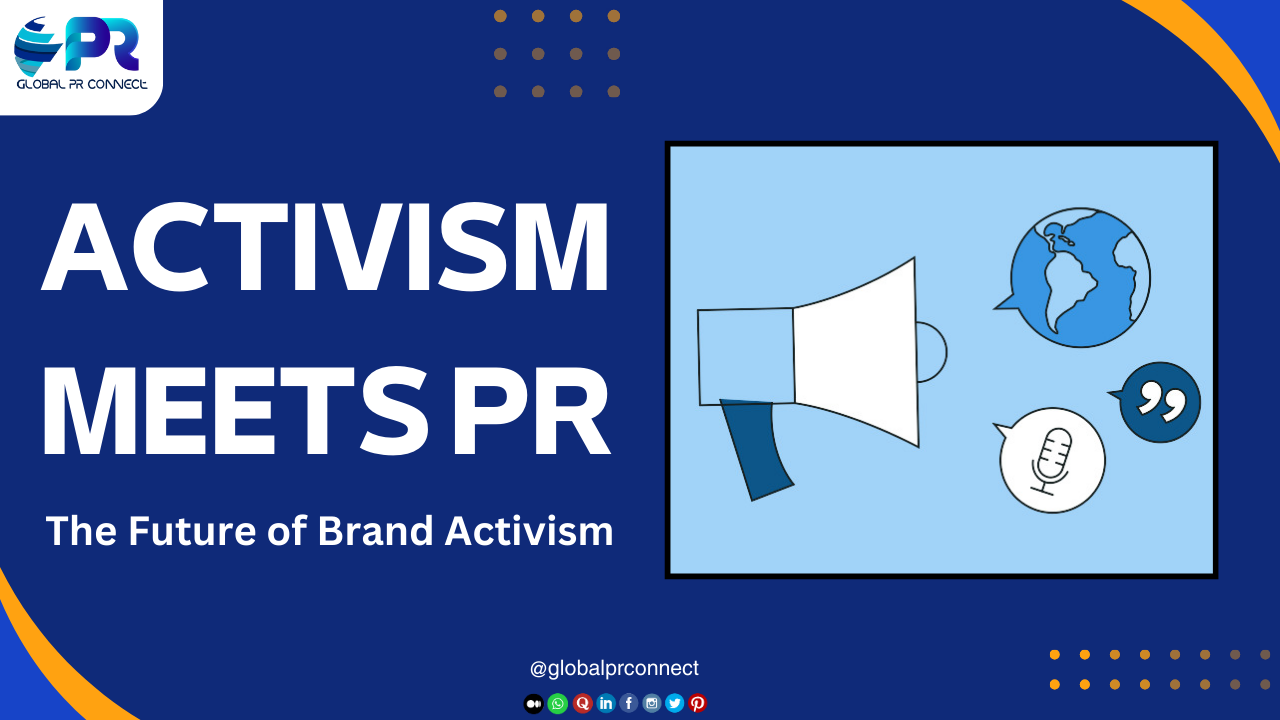Today’s brands are not just businesses but mighty forces of change. In blending public relations with brand activism, it can redefine the landscape of corporate to make companies not just market leaders, but even leaders of social movements. Here’s how PR can prop these brands at the vanguard of social change, creating a future where business and activism go hand in hand.
The Rise of the Activist Brand
Neutrality for businesses in the marketplace is officially a thing of the past. The modern consumer, particularly from Gen Z and millennial groups, wants to make sure that a brand really does care for issues that really matter in society. This is the new reality that has birthed what is called the ‘activist brand,’ the business entity with a call to move beyond the urge to just make profits toward real causes that spur a change.
PR as a Catalyst for Change
Meaning, in these changes, PR has played one of the most crucial roles. The game is not about the brand image but the stories created that speak to peopleᅳreal stories, from the basis of values and beliefs. So, here is how PR can tip the scales of social change:
1. Purpose-Driven Storytelling
PR experts know how to tell a storyᅳor more specifically, a story about a brand’s activism, which will make the message resonate with the audience. In building powerful narratives around a brand’s activism, they can create emotional involvement within the audience.
2. Amplify Voices
PR can be used to amplify minority groups’ voices through strategic media relations and social media campaigns. For businesses, taking up visibility for the meaning in marketing would be using megaphone-type verbiage for causes on tops across their platforms to create a sense of togetherness for everybody.
3. Building Authenticity and Trust
It’s all about genuinity. This is what PR does best—it enables any brand to find a voice with which to express their real commitment to causes and make sure that actionsᅳjust like wordsᅳmatch. Transparent in these efforts puts trust back on the tableᅳa currency long-needed in today’s age of skepticism.
4. Engaging Stakeholders
Good PR is that which involves not only the consumers but all other stakeholders, tooᅳright from employees to investors to partners. Setting everybody aligned to the mission, PR builds a single, cohesive approach toward social activism.
Indian Brands Making a Difference:
India too is not behind in brand activism. Many Indian brands have come up with some really impactful campaigns driven by robust PR strategies. For example:
Tata Tea: Jaago Re One of the best brand activism campaigns in India is the ‘Jaago Re’ campaign by Tata Tea. In a way, by making the social aspect a part of stirring one’s conscience, this campaign has been able to throw light on several issuesᅳranging from corruption and voter participation to even sensitivity towards the opposite gender. Further, with the help of powerful storytelling and high media visibility, Tata Tea has been able to draw millions into the social discourse.
Hindustan Unilever: Project Shakti ‘Project Shakti’ of Hindustan Unilever empowers rural women, brings them in, provides them resources enabling them to be micro-entrepreneurs, and offers a twin advantage of ensuring that goods which are essentially needed reach every nook and corner of the country. Very well-fought PR campaigns conducted around Project Shakti bring out the role of the brand in societal upliftment quite effectively.
The Future: Challenges and Opportunities
The future of brand activism appears brightᅳwith its share of pitfalls. And with potential blowback at every turn and performative activism the order of the day, the push is on to make sure firms remain true to the cause. Here’s how they’ll make it happen:
1. Continuous Actions
Activism isn’t some one-time ad campaign. It takes ongoing effort, continuous action. PR teams must follow up on regular updates with concrete results.
2. Collaborative Efforts
It can also be furthered through NGOs, influencers, and other brands. The possible cooperative PR campaigns indicate huge power in pooling tools for bigger capacity and, therefore, a bigger footprint.
3. Adaptability and Responsiveness
Social issues are never staticᅳnor is brand activism. If anything, PR professionals need to adopt strategies ahead of the curve so they can deal with emerging issues and respond at super speed to any new turns in society.
Conclusion: The New Frontier
Interlocked with social change, PR is the future of brand activism: the more brands speak up and commit to causes, the more PR will drive this commitment through storytelling, trust-building, and mobilization. Together, they will be able to create a world where business can become a force for good and leave its stamp on society.
Adapt to change. Be the change. Let the voice of your brand be that beacon of hope, a spark toward progress. The future is here. The time is now. It is the brands that must lead.
 Skip to content
Skip to content 